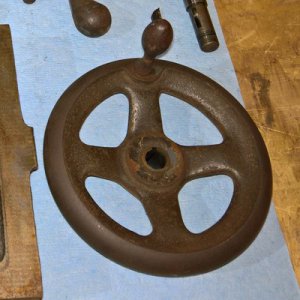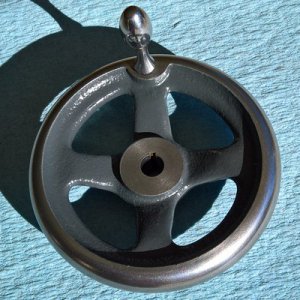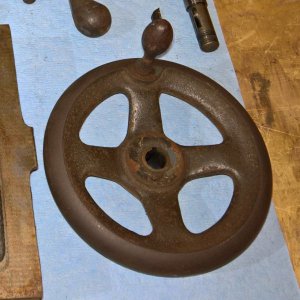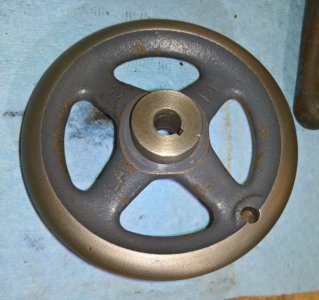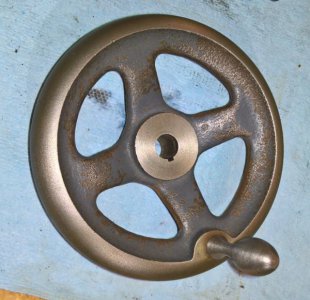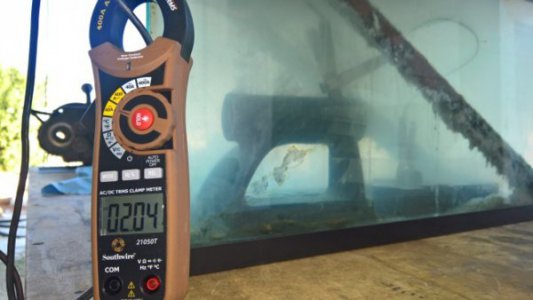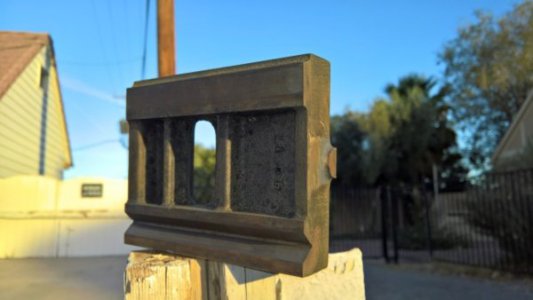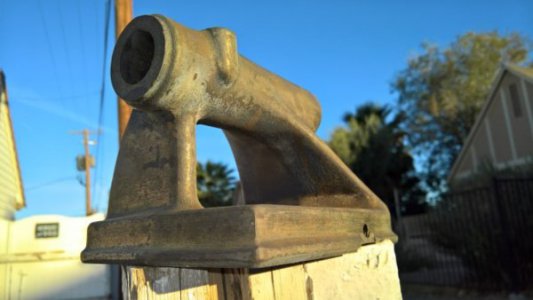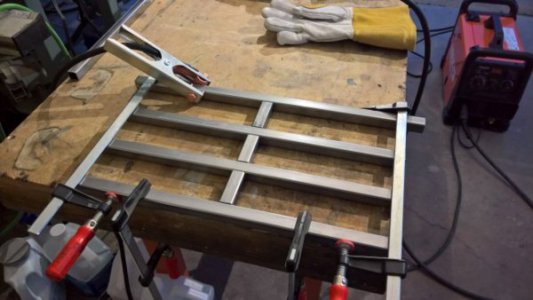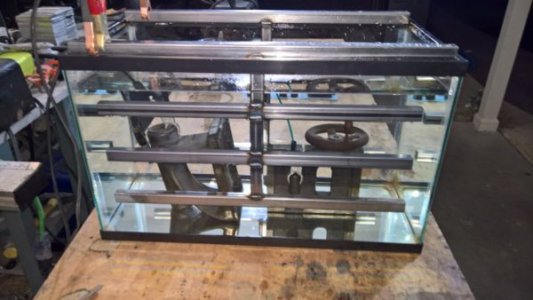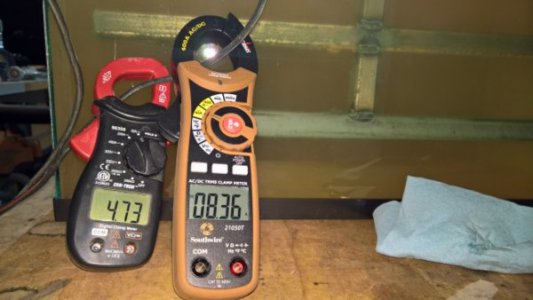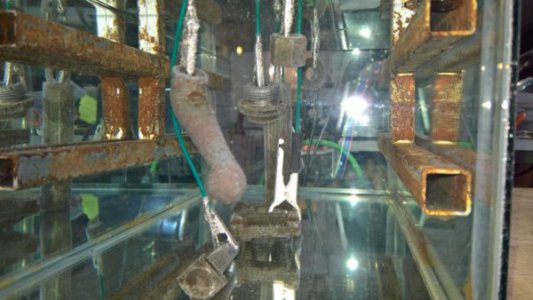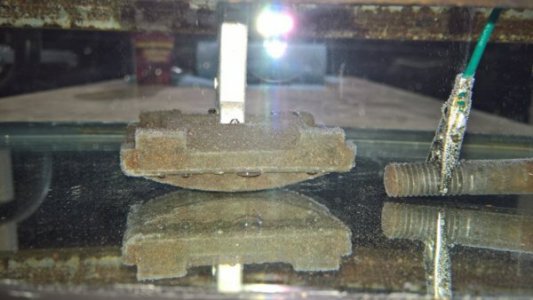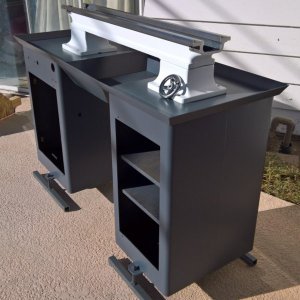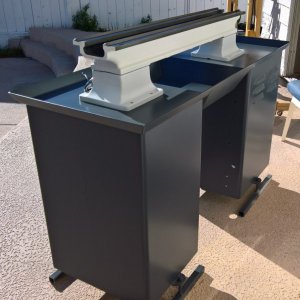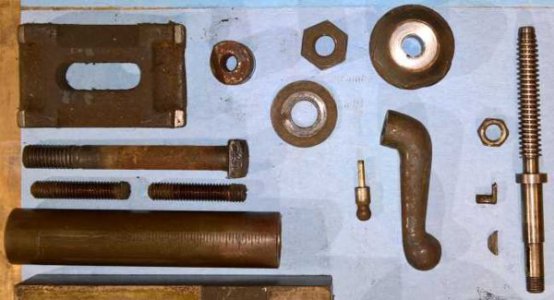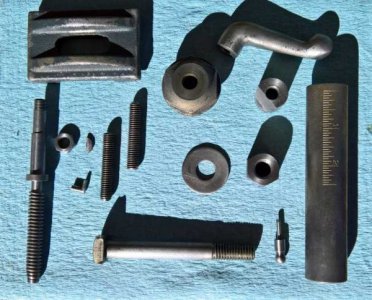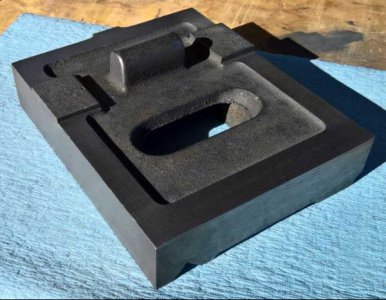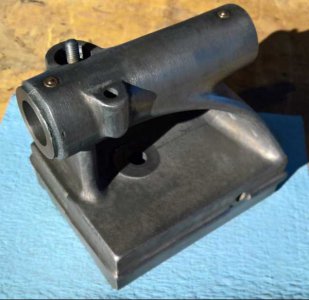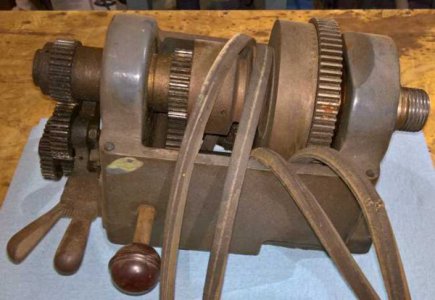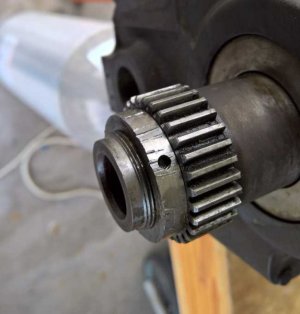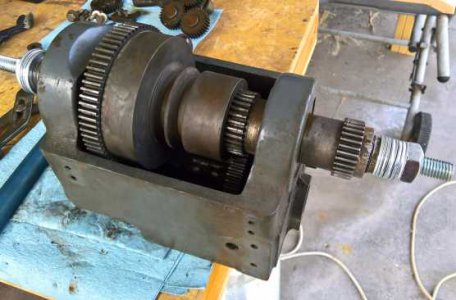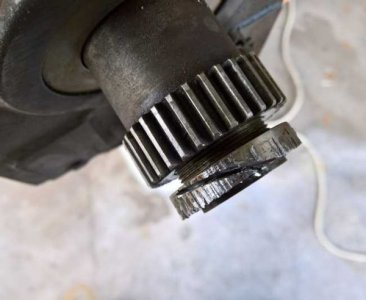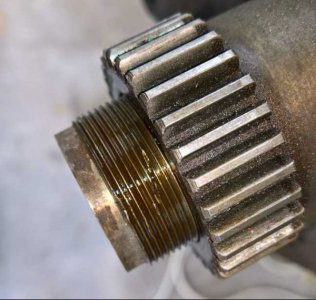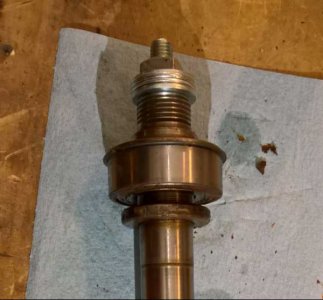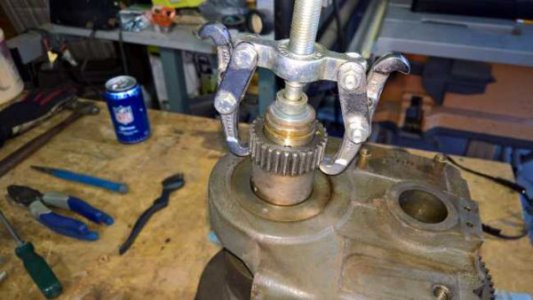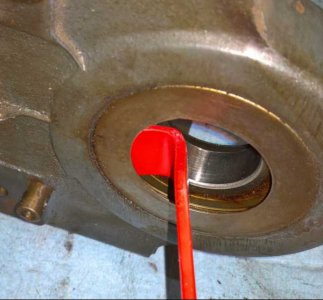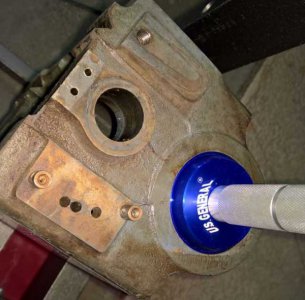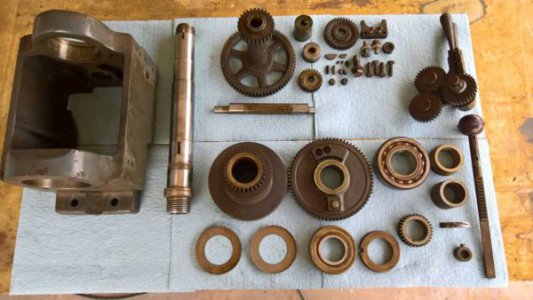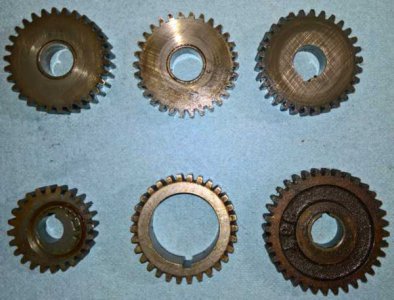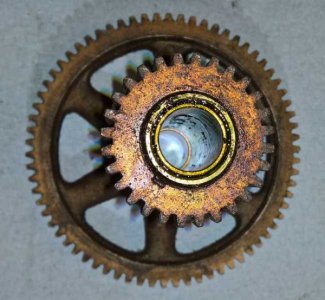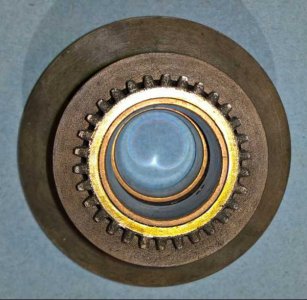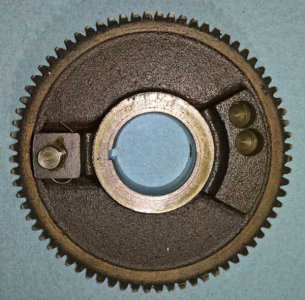All the rust and paint have been removed from the Tailstock handle, time to polish it up before painting the center.
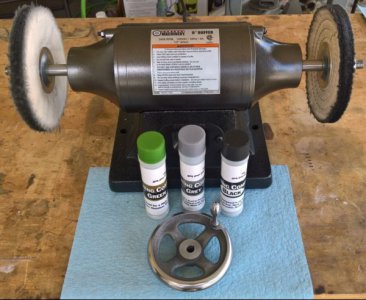 Caution..
Caution.. Do not buff or polish any metal that requires dimensional accuracy..!
Polishing metal is just like sanding wood, you are removing surface material.
If your interested.. here is what I used to polish up this tailstock handle.
Everything pictured above is from Harbor Freight.
Central Machinery bench buffer - Item# 61557 - it worked great. $45.00
Three buffing compounds - Black , Gray and Green. $4.99 ea.
If you never polished metal before - the right way to do it is sand the part with 320 grit sand paper to remove tiny nicks and smooth out the surface then use 400 grit paper to remove the 320 grit scratches and so on.. continuing on with then next highest grit through to 600, If you really want a mirror finish then use 800, 1000, 1200 and you will have an amazing mirror finish when your done.
After the metal is all sanded you then polish the part starting with the black polishing compound - like sand paper but having finer abrasives.. some of the abrasive compounds are better suited to different metals - the ones pictured above are for steel. just think of the black as being a fine abrasive, the gray a super fine and the green an ultra fine..
There are lots of videos on you tube - watch a few then grab your stuff, something to practice on like a spoon from the kitchen drawer and polish it.
you'll be a pro in no time, The bottom side of spoons are a good start because they usually have very fine scratches that will just polish out without sanding.
A pretty good video to watch about polishing procedures is from
Eastwood, goes into detail about it.
Have fun.. Mike.
Electrolysis using a glass tank - Which I do not recommend, If it breaks.. Ouch
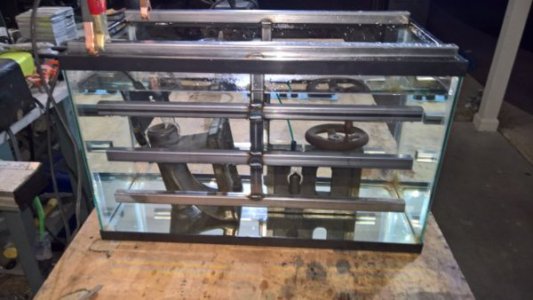
De-Rusting tailstock handle. Note there are fewer bubbles in painted areas.
The tank is running just strait tap water, No washing soda, @ 8 Amps.
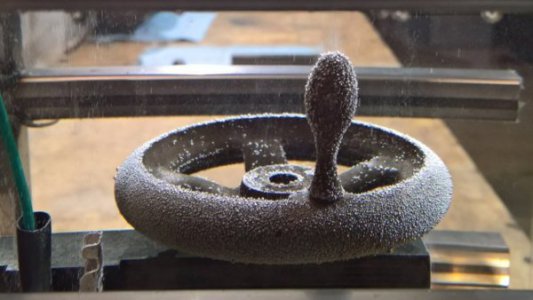
Rust and paint removed over night, then scrubbed with an ultra fine Scotch Bright pad.
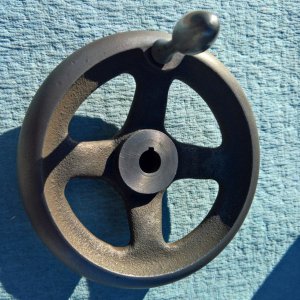
All polished up to a semi gloss finish like the rest of the machine. About 30 Minutes work.
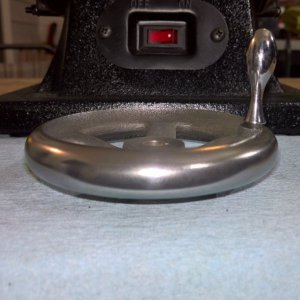
Taped off and ready for paint, I used electrical tape for flexibility.
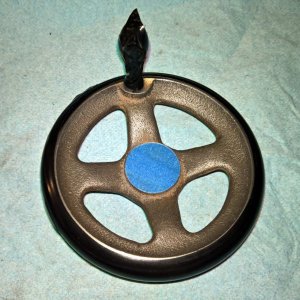
I sprayed both sides with one coat each of primer, paint and matt clear coat 15 min apart.
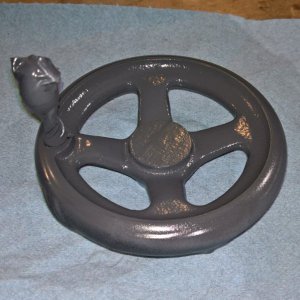
After removing the tape I used acetone to clean the paint from the polished areas, looks pretty snazzy..!
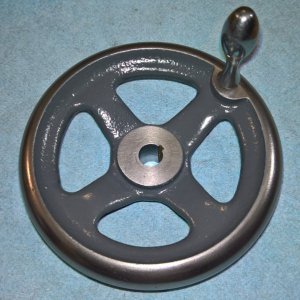
It looks much better with the paint dry - before and after shot... I need to find a coating to protect the polished surface
from future rust... Anyone have some tried and true options..?
